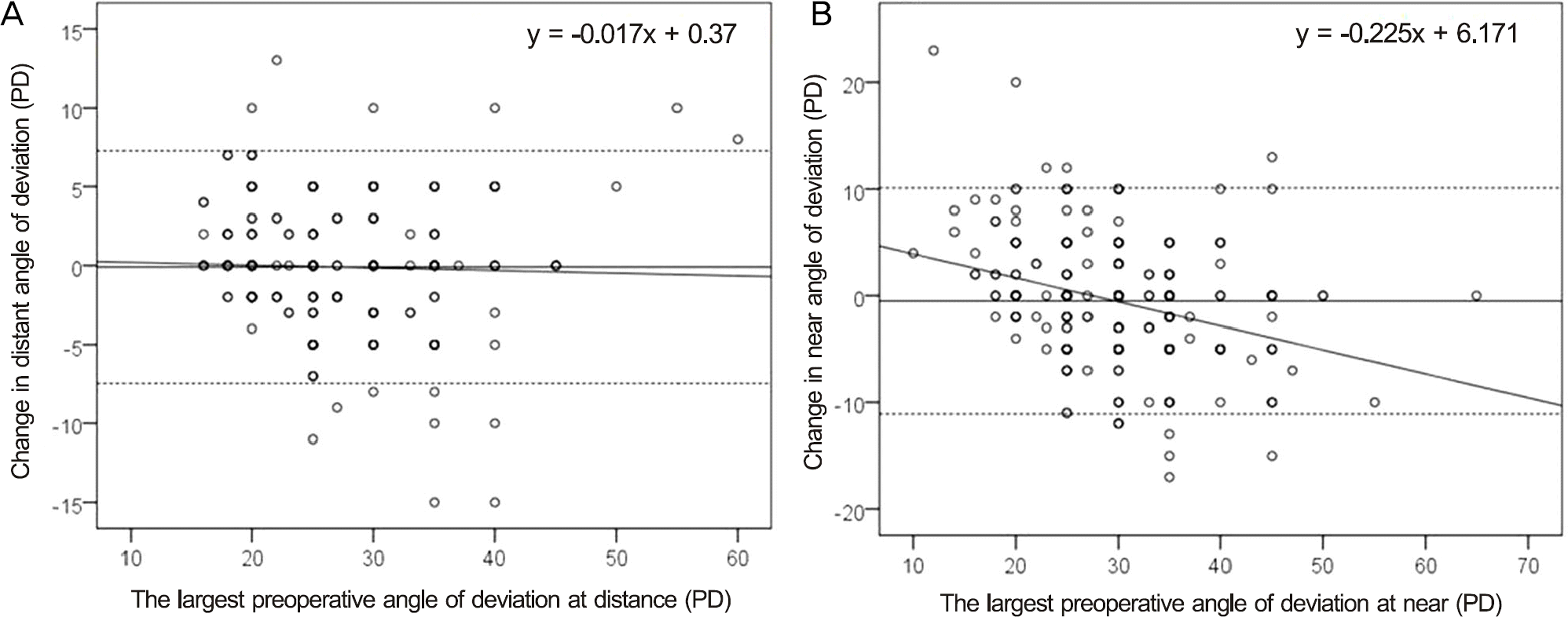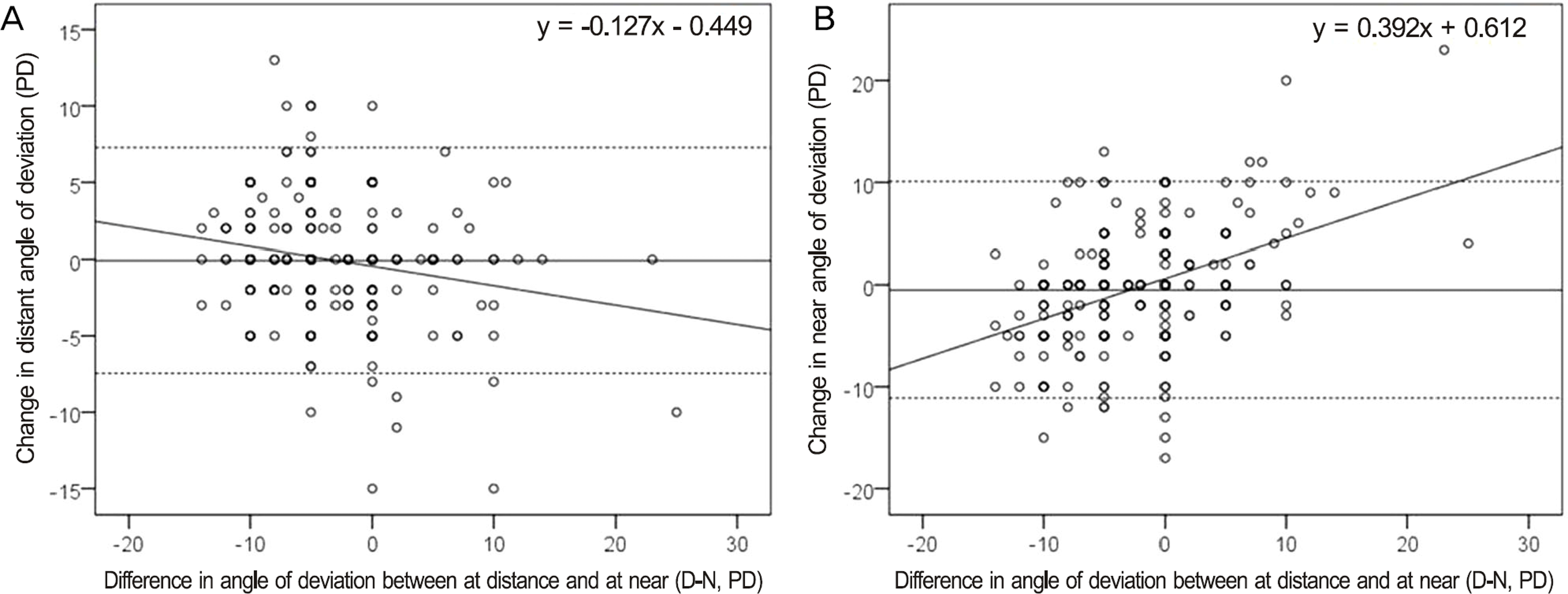Abstract
Purpose
Methods
Results
References
Figure 1.

Figure 2.

Table 1.
Table 2.
| Decreased* | Same† | Increased‡ | |
|---|---|---|---|
| Distance | 6 (1.9) | 312 (96.6) | 5 (1.5) |
| Near | 22 (6.8) | 282 (87.3) | 19 (5.9) |
Values are presented as number (%).* Cases in which exodeviation decreased by 8 PD or more on the day of surgery compared to the largest preoperative angle of devia-tion; † Cases in which the change was within 8 PD; ‡ Cases in which exodeviation increased by 8 PD or more on the day of surgery com-pared to the largest preoperative angle of deviation.
Table 3.
Values are presented as the mean ± SD or number (%). PD = prism diopters; DE = divergence excess; CI = convergence insufficiency; SE = spherical equivalent; F/F = fusion at distance/fusion at near; S/F = suppression at distance/fusion at near; S/S = suppression at distance/suppression at near. * Cases in which exodeviation decreased by 8 PD or more on the day of surgery compared to the largest preoperative angle of deviation; † Cases in which the change was within 8 PD; ‡ Cases in which exodeviation increased by 8 PD or more on the day of surgery compared to the largest preoperative angle of deviation; § p-value for chi-square test; ∏ p-value for one-way ANOVA.
Table 4.
Values are presented as the mean ± SD or number (%). PD = prism diopters; DE = divergence excess; CI = convergence insufficiency; SE = spherical equivalent; F/F = fusion at distance/fusion at near; S/F = suppression at distance/fusion at near; S/S = suppression at distance/suppression at near. * Cases in which exodeviation decreased by 8 PD or more on the day of surgery compared to the largest preoperative angle of deviation; † Cases in which the change was within 8 PD; ‡ Cases in which exodeviation increased by 8 PD or more on the day of surgery compared to the largest preoperative angle of deviation; § p-value for chi-square test; ∏ p-value for one-way ANOVA.
Table 5.
| Decreased* (n = 22) | Same† (n = 282) | Increased‡ (n = 19) | p-value§ | |
|---|---|---|---|---|
| Age ≥ 6 years | 18 (81.8) | 194 (68.8) | 8 (42.1) | 0.019 |
| Age < 6 years | 4 (18.2) | 88 (31.2) | 11 (57.9) |
Values are presented as number (%).* Cases in which exodeviation decreased by 8 PD or more on the day of surgery compared to the largest preoperative angle of deviation; † Cases in which the change was within 8 PD; ‡ Cases in which exodeviation increased by 8 PD or more on the day of surgery compared to the largest preoperative angle of deviation; § p-value for chi-square test.
Table 6.
Values are presented as number (%). ‘Success’ means the case showing between esodeviation of 8 PD or less without diplopia and exodeviation of 10 PD or less, ‘Undercorrection’ means the case showing exodeviation over 10 PD, and ‘Overcorrection’ means the case showing any esode-viation with diplopia or esodeviation over 8 PD. * Cases in which exodeviation decreased by 8 PD or more on the day of surgery compared to the largest preoperative angle of deviation; † Cases in which the change was within 8 PD; ‡ Cases in which exodeviation increased by 8 PD or more on the day of surgery compared to the largest preoperative angle of deviation; § p-value for chi-square test.




 PDF
PDF ePub
ePub Citation
Citation Print
Print


 XML Download
XML Download